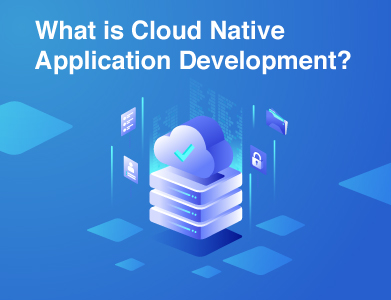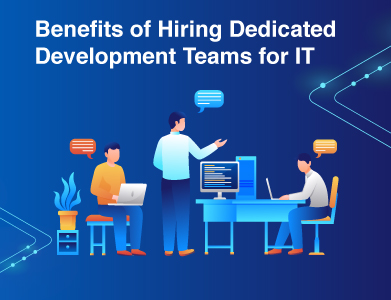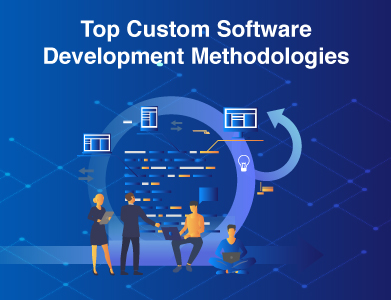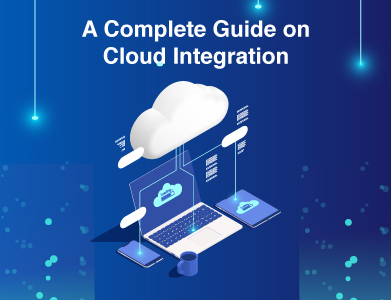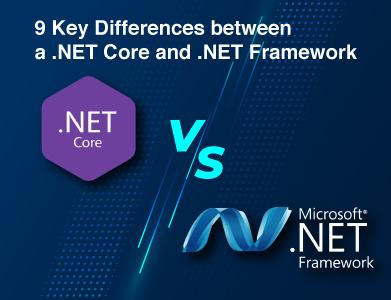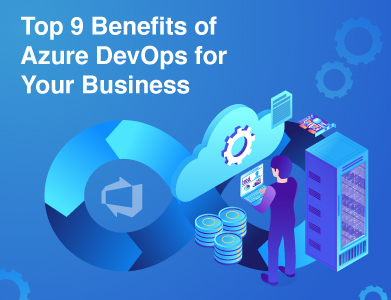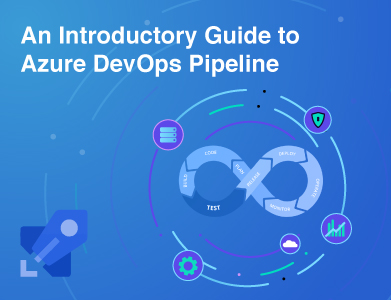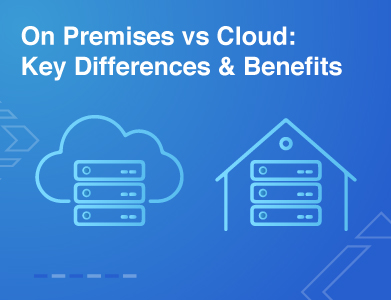Why Your Shipping Business Require Custom Logistics Software Development?
 Admin
Admin Software Development
Software Development Aug 01, 2025
Aug 01, 2025

Table of Content
If you run a shipping business, you already know where the blindspots or loopholes appear. Orders get delayed because systems are not connected. Drivers call in for updates that should already be in their app. Customers follow up on parcels you cannot track in real time.
These issues are not rare, nor new. They happen every day in operations still running on spreadsheets or generic tools that were never designed for your business.
At scale, these issues become expensive. It slows growth, adds pressure on your team, and loses the trust of clients who expect reliability.
Custom software development for logistics addresses this challenge by aligning technology with your organization's actual operational processes.. You get systems that communicate, processes that scale, and data that drives better decisions.
In this guide, we will look at why off-the-shelf platforms often fall short and what you gain when you invest in a logistics solution built specifically for your operations. You will also learn how to evaluate the right logistics software solutions and what to expect when working with a logistics & transportation software development company.
Struggling with delivery delays and disconnected systems?
Prioxis helps logistics companies replace outdated workflows with custom logistics software that reflects how your business actually operates. From real-time tracking to smarter routing and unified dashboards, we design systems that reduce manual overhead and protect client trust.
Why Off-The-Shelf Solutions Fail Shipping Businesses
At first glance, most logistics platforms look the same: dashboards, tracking modules, routing tools. The real problem is not what they show. It is what they assume.
Off-the-shelf solutions are built around how logistics should work in theory, not how it actually runs in your environment. They expect perfect inventory syncs, uniform driver behavior, and standard delivery windows. But your team deals with port delays, fluctuating fuel zones, last-mile handovers, and clients who want status updates every 15 minutes.
This gap between system logic and real-world behavior forces your team into daily battles with systems such as manual overrides, missed handoffs, and endless patchwork just to keep things moving. And as your operations grow, that gap only widens.
What most logistics businesses do not realize early enough is this:
Off-the-shelf software trains your team to work around the system. Bespoke software does the opposite.
It adapts to how your operations actually run and makes that process smoother, faster, and more accountable. The cost of staying generic is not just lost efficiency. It is your best people spending their time fixing the system instead of scaling the business.
- Limited visibility across systems: According to Gartner, 77 percent of supply chain leaders consider real-time visibility critical, yet only 25 percent have it in place. Most boxed logistics platforms cannot deliver that visibility. Data is scattered, systems do not sync, and updates arrive too late to make a difference. You are left guessing where delays happen instead of acting on them.
- Weak integration capabilities: Prebuilt systems typically offer shallow integrations with fleet management, ERP, or IoT sensors. That forces teams to manage disconnected tools, leading to more manual errors.
- No room for exceptions: Real-world logistics involves edge cases such as driver reroutes, cargo delays, client-specific SLAs. Off-the-shelf systems rarely support these without manual workarounds.
- High hidden costs: Teams spend hours maintaining spreadsheets, chasing updates, or fixing system gaps. That manual overhead becomes an invisible tax on your margins.
- Lack of ownership: With vendor-locked platforms, you depend on someone else’s priorities. You cannot innovate, iterate, or improve at your own pace.
Benefits of Custom Software Development For Logistics
Generic tools can handle the basics. But if your operations involve complex routing, live tracking, client-specific workflows, or multi-modal handovers, you need systems that are built for your business, not borrowed from another industry.
Custom logistics software aligns directly with how your teams work on the ground and in the back office. Here how it benefits your logistics:
- You stop managing work across five tools When routing, dispatch, tracking, and billing live in different systems, mistakes creep in. A custom platform connects them. Your team gets one system that reflects how shipments move across your business.
- Your team spends less time fixing errors Missed scans, wrong delivery windows, outdated inventory and what not! Most of these issues happen because systems do not talk to each other. When your tech stack is built around your actual process, errors drop and handoffs improve.
- You can act fast when things change Whether a truck breaks down or a customer updates an address, your team should not be scrambling. A connected system makes rerouting and updates easier, without needing to call five people.
- You can give clients real answers, not estimates Real-time updates become the default. Your team is not chasing data across spreadsheets or waiting on someone to check with the warehouse. That builds trust without adding workload.
- You stay in control as you scale Adding new regions, partners, or services does not require retooling everything. The platform adapts with your operations instead of becoming a blocker every time something changes.
Want to know which features fall under a Transportation Management System and which require custom build? This guide to transport management system(TMS) breaks it down clearly so you can plan with confidence.
Key Features to Include in a Custom Logistics Platform
Every logistics business has its own process quirks, regional dependencies, and service-level promises. A high-performing logistics platform is not just about digitization. It is about control, responsiveness, and visibility. These are the features that make a real operational difference:
1. Real-time Fleet Tracking with Predictive Alerts
Do not settle for a blinking dot on a map. You need live GPS tracking paired with AI that flags early signals of delays, reroutes, or unexpected stops. This allows your ops team to act before customers escalate.
2. Smart Routing with Fuel and Time Optimization
Dynamic routing should go beyond Google Maps. A custom system can optimize based on live traffic, delivery windows, fuel zones, and even driver habits. Over time, it learns the patterns that save money and avoid delays.
3. Unified Shipment Dashboard Across Modes and Partners
Your shipments might move across trucks, ports, rail, or third-party carriers. A good platform consolidates those into one view, even if the data comes from different vendors. That means no more tab-switching or piecing together updates.
4. Workflow Automation for Pickups, Proof of Delivery, and Billing
Manual entries slow everything down. With custom logic, tasks like assigning pickups, capturing PODs, generating invoices, or updating clients can be triggered automatically, reducing lag and human error.
5. Exception Handling Engine with Escalation Logic
Real-world logistics is full of disruptions. Your platform should let you define what counts as an exception and route it to the right team. Whether it is a damaged package, missed SLA, or inventory mismatch, it gets resolved without creating chaos.
6. Driver App with Offline Sync and Built-in Compliance
Drivers should not be left stranded when connectivity drops. A native mobile app with offline sync ensures updates are captured and pushed once online. You can also include features like e-signatures, checklists, and safety prompts.
7. AI-powered Demand Forecasting and Load Planning
Forecasting needs to be more than gut feel. Machine learning models trained on your historical data can predict demand peaks, suggest optimal loads, and even recommend warehouse shifts. That helps you stay one step ahead instead of always catching up.
8. Client Portal with Live ETAs, Status Updates, and SLA Tracking
Your clients should not have to chase you for answers. A dedicated portal gives them real-time visibility, downloadable reports, and transparency on SLAs. It cuts down support tickets and builds trust at scale.
9. Seamless Integrations with ERP, WMS, TMS, and Accounting
Your logistics software should not live in a silo. It needs to speak to your ERP, warehouse systems, transport software, and finance tools. That ensures data flows across teams without duplication or delays.
10. Custom Reporting and Analytics Layer
Every logistics business has unique KPIs. Whether it is cost per delivery, on-time rate, or container idle time, your system should give you dashboards that reflect your priorities, not just canned charts.
Want to see how a connected platform could reduce your manual workload by 30%?
At Prioxis, we work with logistics teams who are done with fragmented tools, manual workarounds, and stalled delivery cycles. If your operations are scaling but your systems are not, we will help you map what a custom logistics platform could fix before you commit to anything.
How to Choose the Right Logistics Software Development Services
Choosing the right logistics software partner is not about who promises the fastest delivery. It is about who can de-risk your investment and help you build a system that aligns with your operational reality.
Here’s What to Look For:
1. Experience solving logistics-specific challenges
Many vendors say they build logistics software. Few have worked on real issues like failed syncs between WMS and dispatch, delivery route optimization in traffic-prone cities, or digitizing driver logs for compliance audits. Ask what specific logistics use cases they have delivered and how it impacted the client’s business metrics, not just “delivered the app.”
2. Integration capability beyond just APIs
Your platform is not built in a vacuum. You need someone who can connect it with your ERP, telematics, route planning tools, and invoicing systems including legacy or on-prem software. This is often where off-the-shelf fails, and where experienced partners shine. For example, our work with logistics firms has included syncing inventory visibility across cloud and on-ground systems.
3. Platform architecture that supports scale and change
Your needs today will not be your needs six months from now. Can the partner build modular systems that accommodate new delivery zones, custom SLAs, or fleet expansion without rewrites? Ask about versioning, configuration flexibility, and how easily workflows can be updated.
4. Delivery methodology that supports real operations
In logistics, there is no luxury of long feedback loops. Teams work in shifts, decisions happen in real time. Look for partners who work in close weekly sprints, provide ongoing QA support, and are used to building tools for non-technical users like dispatch teams or drivers.
5. Transparent collaboration and post-launch support
Beyond the build, who maintains the platform? Who owns bugs in live environments? Will they support rollout across teams, conduct training, and offer usage insights? Many agencies disappear post-handoff. Look for one that takes long-term accountability.
List of Best Custom Logistics Software Development Companies
1. Prioxis Technologies
A preferred partner for logistics businesses scaling from spreadsheets to real-time platforms, Prioxis blends deep technical expertise with business-first thinking. From mobile-first route tracking to integrated ERP connectors and smart dispatch workflows, Prioxis has helped mid-sized and enterprise clients in logistics modernise their systems with minimal disruption. With a consultative approach, India-based delivery teams, and on-ground experience in shipping hubs like the USA, UK, UAE and Europe, Prioxis stands out for its speed, flexibility, and founder-level accountability.
Best For: Companies needing end-to-end platform architecture, with flexibility in team scaling and long-term support.
Move beyond spreadsheets and build your custom logistics platform with Prioxis by your side.
2. ELEKS
Known for its enterprise consulting and software engineering depth, ELEKS brings strong domain knowledge in transportation and logistics. Their work spans freight optimization, warehouse automation, and predictive analytics. Ideal for large-scale logistics networks looking to build next-generation digital infrastructure.
Best For: Enterprise supply chain firms exploring AI in transportation, IoT, and analytics-led solutions.
3. Iflexion
A US-headquartered firm with offshore delivery in Eastern Europe, Iflexion offers solid custom development for logistics apps, including fleet management and delivery tracking. Their strength lies in structured delivery and long-term application maintenance.
Best For: Businesses needing reliable development and post-launch support with US-based collaboration.
4. Intellias
With strong transport and mobility verticals, Intellias helps logistics businesses digitize everything from telematics to real-time visibility. They also offer connected vehicle and smart mobility expertise, making them a good fit for businesses merging logistics with mobility or automation layers.
Best For: Logistics + mobility businesses exploring long-term digital transformation.
5. Innowise Group
Known for rapid prototyping and MVP delivery, Innowise suits logistics startups or fast-scaling platforms needing to validate use cases before full-scale rollout. They offer cost-effective, agile-based development models with tech stacks tailored to client needs.
Best For: Startups or mid-stage companies looking for fast builds or MVP validation.
Frequently Asked Questions (FAQs):
1. What is the Difference Between Custom and Pre-Built Logistics Software?
Pre-built systems make your team adapt to the tool. Custom software does the opposite. Most off-the-shelf logistics platforms come with fixed modules and limited integration. You end up managing exceptions manually and paying for features you do not use.
Custom platforms are designed around your dispatch rules, driver workflows, and client SLAs, so your team spends less time fixing gaps and more time scaling operations.
2. How Long Does Custom Logistics Software Development Take?
Timelines depend on complexity, but here is the real answer. What slows teams down is not the code. There are unclear requirements, changing scope, and lack of operational clarity. When those are sorted early, a logistics platform with core modules like order tracking, dispatch, fleet integration, and invoicing can go live in 12 to 18 weeks. For MVPs or phase-wise launches, even faster.
3. How Much Does It Cost to Develop Custom Logistics Software?
Costs vary based on features, scale, and integration needs. Most projects fall between $40,000 and $120,000. The larger cost is not development. It is choosing the wrong system and spending years working around it. If you want a detailed view of what affects pricing, including team structure, modules, and tech stack, we have broken that down here.
4. Who Should Be Involved in the Software Development Process For Logistics?
Product owners alone are not enough, you need input from dispatch leads, operations heads, customer service, and even drivers if possible. The best platforms are shaped by the people using them daily, not just the ones signing off. Internally, assign one owner for approvals and two users for real-time feedback. From the vendor side, make sure they bring both technical and logistics domain understanding to avoid misalignment.
Expanding to new regions or partners?
Your tech should not slow you down. Prioxis builds custom logistics platforms that adapt as you grow without constant rework or vendor lock-in. Whether you are adding warehouses, launching in new cities, or onboarding partners, we help you scale without chaos.
Conclusion
Generic tools might get your shipping business online. But they will not take you where you need to go.
Real logistics operations are too dynamic, too exception-heavy, and too client-sensitive to run on platforms that were not built for your workflows. The cost is not just operational drag. It has lost trust, delayed decisions, and missed growth windows.
Custom logistics software gives you control over systems plus how your business evolves. You define how things work. You decide what gets automated. And you stop fixing tools that should have been helping you in the first place.
If you are scaling and your tech stack is still playing catch-up, it is time to build something better.
Get in touch
Latest Posts

